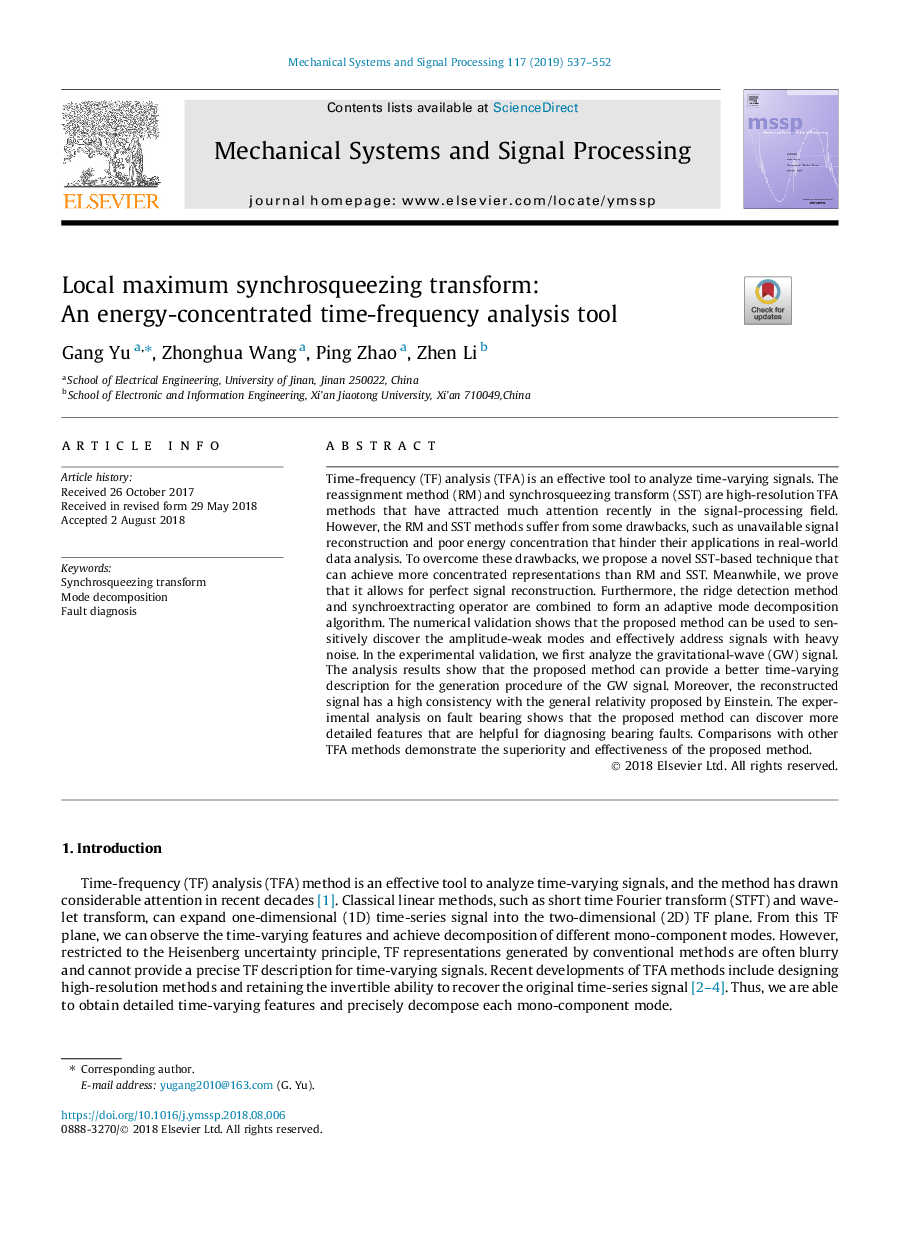| Article ID | Journal | Published Year | Pages | File Type |
|---|---|---|---|---|
| 11002942 | Mechanical Systems and Signal Processing | 2019 | 16 Pages |
Abstract
Time-frequency (TF) analysis (TFA) is an effective tool to analyze time-varying signals. The reassignment method (RM) and synchrosqueezing transform (SST) are high-resolution TFA methods that have attracted much attention recently in the signal-processing field. However, the RM and SST methods suffer from some drawbacks, such as unavailable signal reconstruction and poor energy concentration that hinder their applications in real-world data analysis. To overcome these drawbacks, we propose a novel SST-based technique that can achieve more concentrated representations than RM and SST. Meanwhile, we prove that it allows for perfect signal reconstruction. Furthermore, the ridge detection method and synchroextracting operator are combined to form an adaptive mode decomposition algorithm. The numerical validation shows that the proposed method can be used to sensitively discover the amplitude-weak modes and effectively address signals with heavy noise. In the experimental validation, we first analyze the gravitational-wave (GW) signal. The analysis results show that the proposed method can provide a better time-varying description for the generation procedure of the GW signal. Moreover, the reconstructed signal has a high consistency with the general relativity proposed by Einstein. The experimental analysis on fault bearing shows that the proposed method can discover more detailed features that are helpful for diagnosing bearing faults. Comparisons with other TFA methods demonstrate the superiority and effectiveness of the proposed method.
Related Topics
Physical Sciences and Engineering
Computer Science
Signal Processing
Authors
Gang Yu, Zhonghua Wang, Ping Zhao, Zhen Li,
